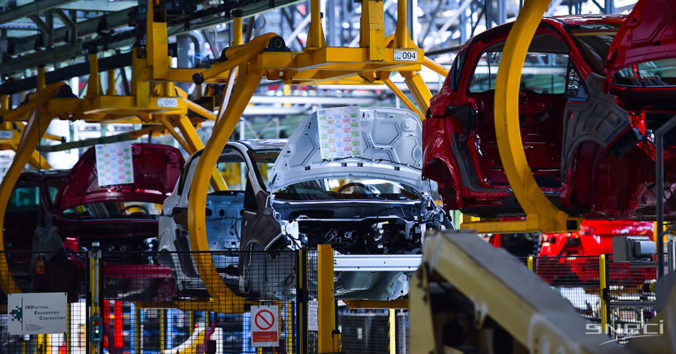Growing automotive market: an opportunity or a big challenge?

The current period of prosperity on the car market gives great possibilities for automotive companies to increase their scale of activity, consequently their financial results.
Automotive companies are constantly struggling with the dilemma “how to plan our development?” – which is often understood only as the increase of profits – in order to minimize all risks and especially to avoid negative effects on the widely understood quality management system, which has to ensure the quality of products and services to satisfy customers. Of course, a sustainable development – one which will not disorganize the functioning of the company in any area – is always the backbone of such plans. Reality, however, verifies them and often denounces their weaknesses in a painful way.
Examples of companies which have doubled their production volume in a few years, the emergence of disproportionate and often uncontrolled increase of quality and production issues, confirms how pernicious may be the «there is a demand so let’s get out of this cake as much as possible» approach.
Often during such intensive expansion, to win a project, get a new client, the company will be forced to offer “unrivalled price”. Consequently, it may turn out that – in connection with the used production technology, the state of the machine park, the quality of the materials / components used in the production, production organization and so on – the company will not be able to achieve certain product specifications in serial production condition. This may not always have an immediate effect on the functionality of the product – as for example cleanliness, sometimes it will be a process with a high level of scrap and related with this risks for the customers.
In addition, sudden increases in production and employment, coupled with seasonal increase in orders, introduction of a large number of new projects to serial production (often with the process not correctly set, with high level of scrap or delay in time) lead to problems that may occur permanently or periodically, as:
- Production at the border of capacity or above capacity of the line,
- Frequent production changeover,
- High volume of semi-finished and final products buffers – on the production line and outside of the production line,
- Lack of space,
- Lack of time for scheduled maintenance, modifications, 5S rules, operators training (job observation),
- Defined process and product controls are skipped,
- High level of scrap,
- Not enough of qualified and production staff, or employed with delay in relation to needs
- Last minute production (and transport organized by taxi)
Related with those problems quality risks are heavy weight and always have an important quality effect on customers. Additionally, the human factor impact on the production process is still significant in many automotive companies and, in the conditions described above, often people directly responsible for planning / production organizations (production managers, team-leaders) have a tendency to choose the simplest way to realize the production plan, leading to an unorganized production as defined in control plan, 5S rules and so on. Job observation, which is supposed to assist in the management of production staff, of course does not exist in this condition. We can also add to this: low involvement of production operators due to low salary, weakness of motivation programs and the resulting from this are high turnover of the staff and difficulty to hire new employees.
In such production conditions, it is hard to talk about the real quality management of production, we can rather compare it to a dog trying to catch its own tail. A problem generates a new problem and companies are unable to get out of this closed circle. Unfortunately, this situation is a part of the reality of some automotive suppliers, consequently part of our reality.




